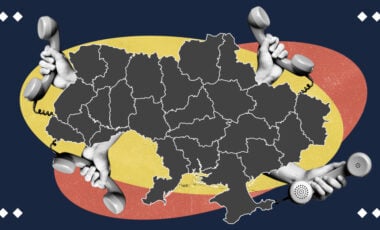Solutions to win: Odesa factory produces strike drones

Photo: ShoTam
The Khvylia'91 charity fund and the National Guard founded an FPV drone factory in the Odesa region. These drones have a cost commensurate with their efficiency level, which has already been demonstrated in combat.
Kateryna Novachuk, the co-founder and director of the Khvylia'91 charitable foundation, informed the ShoTam publication about that.
What is the problem?
The military requires every available FPV drone, ranging from those capable of flying 3km to those capable of flying 10km to those skilled of flying as far as 40km. Regardless of its range, each drone is equally important and serves a different purpose.
Currently, Chinese authorities have prohibited the export of Mavic drones and other copters, leading to charitable foundations and volunteers making substantial purchases of the available products from global markets. Furthermore, components for drones remain exportable.
What is the solution?
The primary focus of the fund's operations was the provision of DJI and other brands of drones, primarily for reconnaissance purposes. While using these drones as missile delivery systems is financially unfeasible, they are sometimes the only viable option for the military.

Photo: ShoTam
So the Khvylia'91 fund became interested in FPV – first person view – impact drones.
The fund discovered that one of the branches of the Ukrainian National Guard was embarking on the development of attack drones. After assessing their technology, both parties agreed it was a worthwhile investment, as drones could partly substitute for personnel.

Photo: ShoTam
How does it work?
According to the director of the Khvylia'91 charitable foundation, in the fall of 2022, the foundation began developing the FPV strike drone factory, and the first results were seen before the new year.
The drone is affordably priced between 250-300 dollars, significantly cheaper than the DJI Mavic 3 Fly More Combo drone, which retails for approximately 2.5–3 thousand dollars.

Photo: ShoTam
Novachuk reports that they find factories directly in China, purchase components, and bring them to Ukraine.
The fund's co-founder observed that the factory had a gradual increase in production figures, commencing with an initial monthly output of 100 drones before proceeding to 500 and culminating in a planned production of 1,000 drones.

Photo: ShoTam
"The medium-sized Kolibri [Hummingbird – ed.] UAV is the most popular drone model. It has a payload capacity of up to 1 kg, a flight range of approximately 6 km, and a speed of up to 170 km/h.
Engineers are currently developing the "Lastivka" [Swallow – ed.] – a large bomber drone that can drop several shells. In addition to the drone itself, the military needs a kit for it – glasses, remote controls, modules, antennas, and repeaters," she said.

Photo: ShoTam
Novachuk noted that when used correctly, our drones successfully hit enemy targets: trenches, armored personnel carriers, pickup trucks, and KAMAZ trucks. Also, drones are very effective in urban battles because they can fly into hard-to-reach places, for example, buildings.

Photo: ShoTam
"At first, drones were manufactured specifically for the National Guard of Ukraine unit and a minimal number for some other military personnel who knew how to pilot and confirmed their skills. After scaling up production, it became clear that pilots' knowledge also needed to be scaled up. Very few military personnel knew how to fly FPV drones ", the director of the charitable foundation emphasized.

Photo: ShoTam
The fund also launched a UAV school for the military at the National Guard of Ukraine base, where the pilot of the Mavic reconnaissance drone and the pilot of the FPV attack drone of the "Kolibri" type study in the combat group. The course lasts two weeks.
For reference:
It should be noted that eight new UAV strike companies were formed in Ukraine: they are ready for battle, and pickups, attack copters, and FPV drones have already been handed over to the military.




















































